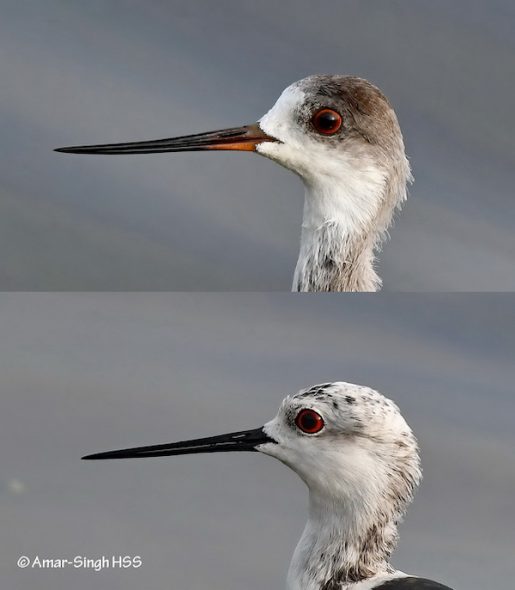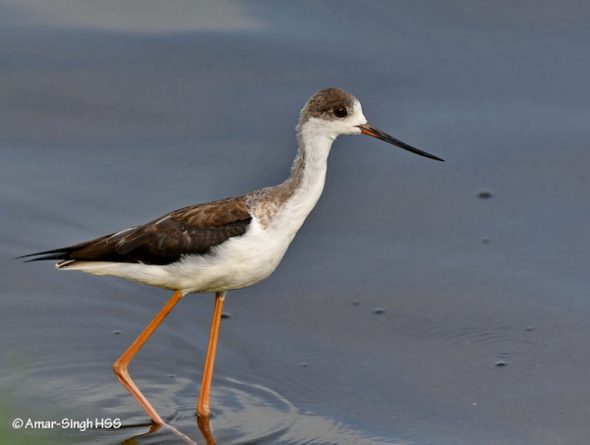
Post 1.
This wetlands site has many Black-winged Stilts (Himantopus himantopus), some resident breeders boosted by migratory visitors. On this visit I saw in excess of 120 birds. I am personally still trying to make sense of variation in the Black-winged Stilts I observe. I will do a number of posts to share my observations and hope for some opinions. There are issues regarding plumage of juveniles, breeding and non-breeding birds, male-female differentiation and finally subspecies, if any. While some consider four subspecies (excluding the American Black-necked Stilt Himantopus mexicanus), others view them as monotypic.
Post 2.
I will start off with juveniles.

Post 3.
Some (HBW 2020) state that juveniles are “similar to adult female” but Wells (1999), Taylor (2005) and Hayman (1986) all indicate plumage and/or bare part differences. The composite in Post 1 is of a juvenile (above) and adult (male). Post 2 and 3 are of two different self-feeding juveniles; both were accompanied by an adult. Note that juveniles have lighter bills as compared to the dark black adults and the base of the bill (especially lower mandible) is orange. The iris in adults is dark red, while in juveniles it is more orange-brown. The legs in juveniles are orange-pink, while in adults they are rose-pink. Juveniles have a brownish or greyish crown, nape and hind-neck which is never white (Taylor, Hayman); this may extend into the face like a mask. Adults have much colour variation of the crown, nape and hind-neck, from white to dusky-grey and possibly even black (more on this later). The mantle and upper parts in juveniles are grey-brown (?hint of green) and feathers are fringed pale buff. Hayman (1986) notes that juvenile plumage remains distinct for many months.
References
- Don Taylor, Stephen Message (2005). Waders of Europe, Asia and North America. Helm.
- Hayman, Marchant, Prater (1986). Shorebirds: an identification guide to the waders of the world. Christopher Helm, London.
- Wells, D.R. (1999) The birds of the Thai-Malay Peninsula: Vol. 1 (Non-Passerines). Christopher Helm, London
- Pierce, R.J. and G. M. Kirwan (2020). Black-winged Stilt (Himantopus himantopus), version 1.0. In Birds of the World (S. M. Billerman, B. K. Keeney, P. G. Rodewald, and T. S. Schulenberg, Editors). Cornell Lab of Ornithology, Ithaca, NY, USA.
- Parasharya, D., Patel, B., & Parasharya, B. M., 2010. Plumage variations in Black-winged Stilt Himantopus himantopus. Indian BIRDS 6 (4&5):98–99.
Amar-Singh HSS (Dato’ Dr) – Ipoh, Perak, Malaysia
Location: Malim Nawar, Perak, Malaysia
Habitat: Ex-mining pools, fish farming, extensive wetlands
Date: 7th January 2021
Equipment: Equipment: Nikon D500 SLR with Nikon AF-S Nikkor 500mm f/5.6E PF ED VR, handheld with Rode VideoMic Pro Plus Shotgun Microphone








